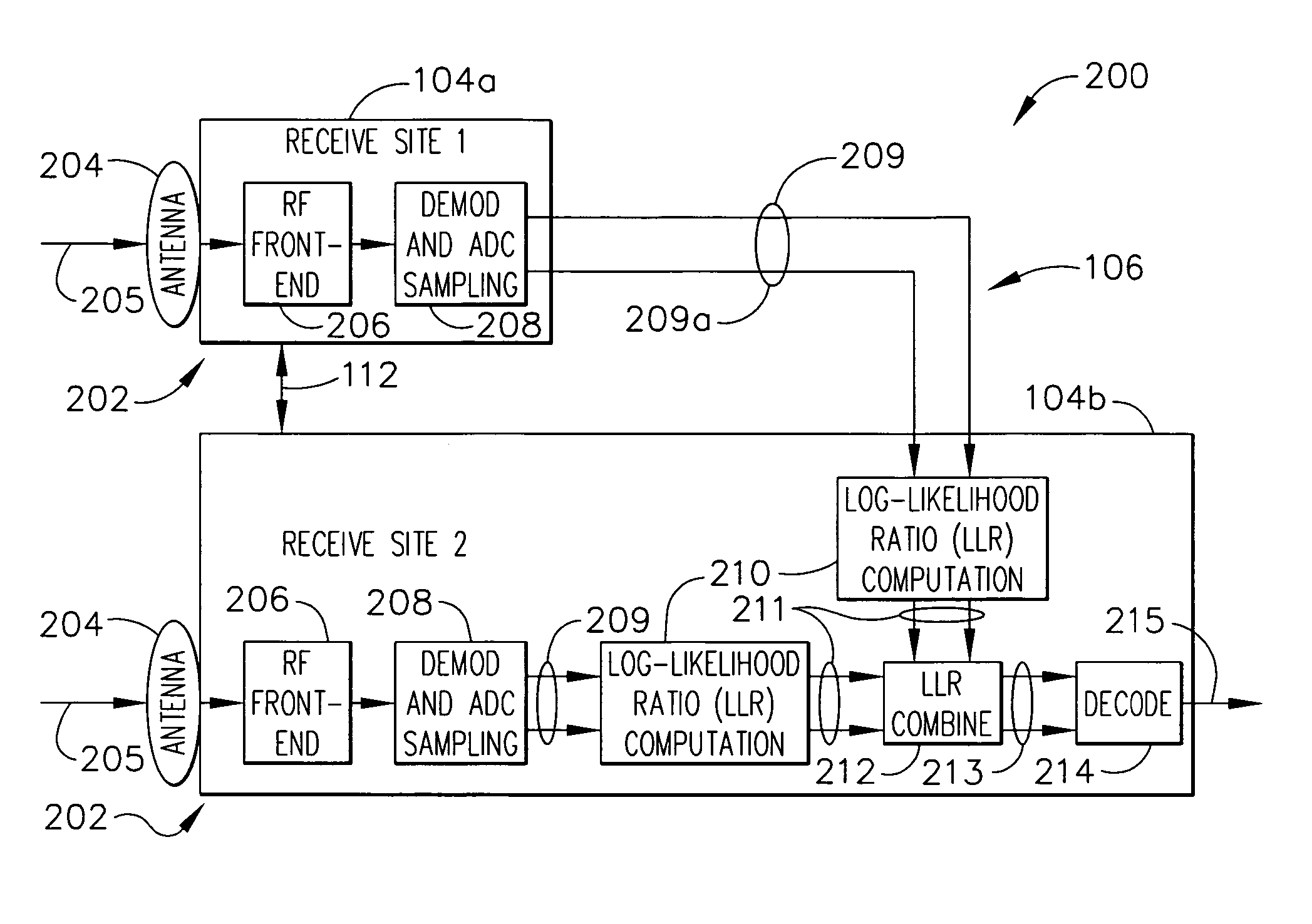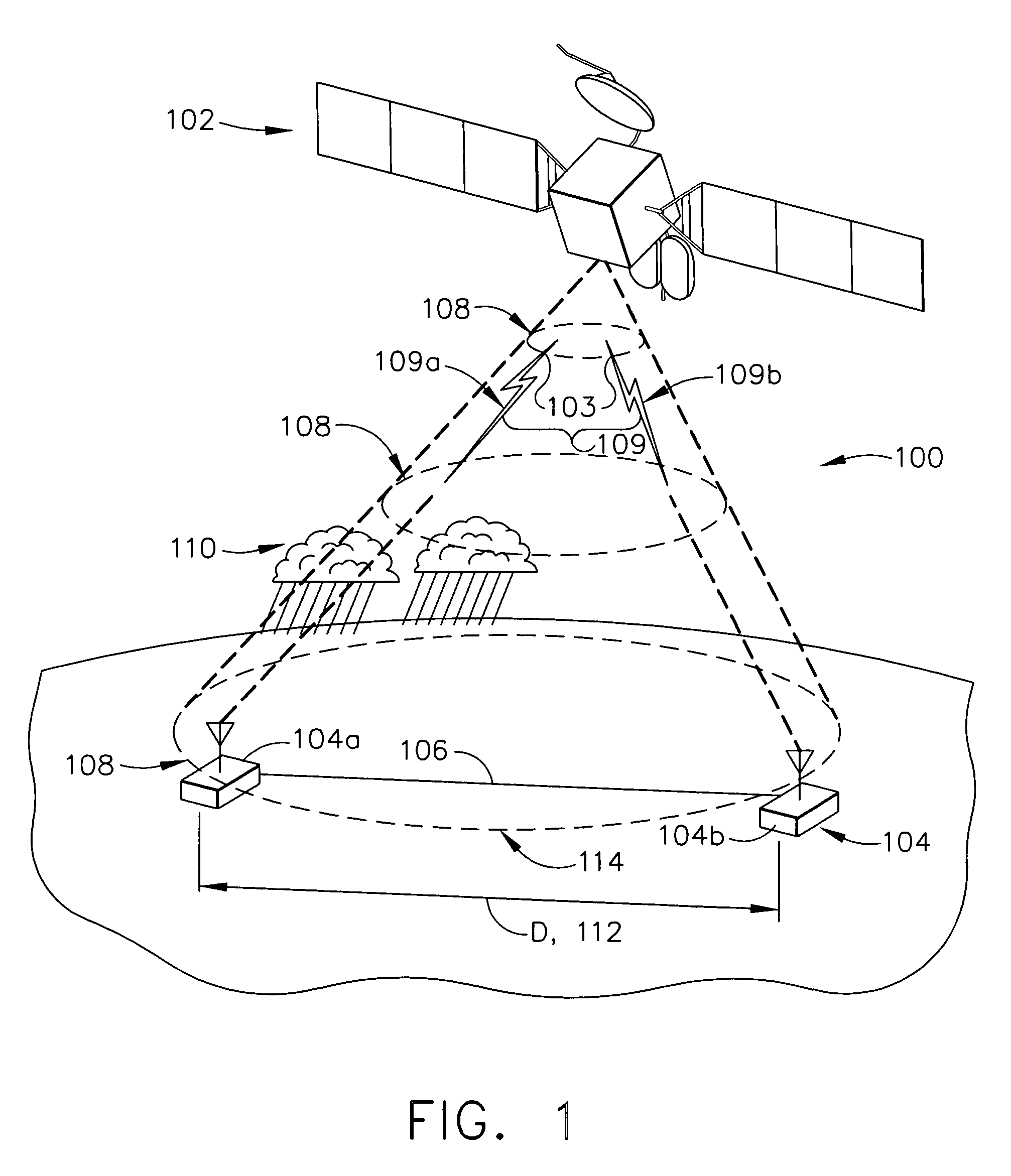Efficient diversity combining for wideband downlink
a wideband downlink and diversity technology, applied in the field of radio frequency communication systems, can solve the problems of not being able to build a link with ample power margin, not always being able to locate a bem receive station in a low precipitation area of the world, and previous methods of combining multiple received signals are usually impractical or very costly for a very high data rate bem link, and achieve the effect of high link availability
- Summary
- Abstract
- Description
- Claims
- Application Information
AI Technical Summary
Benefits of technology
Problems solved by technology
Method used
Image
Examples
example
[0034]FIG. 4 represents the performance advantages of joint-LLR diversity combining according to one embodiment for an example with two receive sites. It is assumed that the sites are separated by a large enough distance to ensure decorrelation of atmospheric phenomena. Aside from quantization errors in the soft-decision computation output (which can be made negligible by proper choice of number of quantization levels), joint-soft-decision combining according to one embodiment may have identical performance to the coherent combining method of diversity combining (but without the disadvantages of that method, as described above). In this plot, the overall link, e.g., combined link 109 provided by downlink beam 108, can be closed whenever the combined SNR operating points of site 1 (abscissa) and site 2 (ordinate) lie to the right and above the curves shown (curve 510 for joint-LLR or coherent combining; curve 520 for BER based switching combining). Thus, the simpler BER based switchi...
PUM
 Login to View More
Login to View More Abstract
Description
Claims
Application Information
 Login to View More
Login to View More - R&D
- Intellectual Property
- Life Sciences
- Materials
- Tech Scout
- Unparalleled Data Quality
- Higher Quality Content
- 60% Fewer Hallucinations
Browse by: Latest US Patents, China's latest patents, Technical Efficacy Thesaurus, Application Domain, Technology Topic, Popular Technical Reports.
© 2025 PatSnap. All rights reserved.Legal|Privacy policy|Modern Slavery Act Transparency Statement|Sitemap|About US| Contact US: help@patsnap.com



